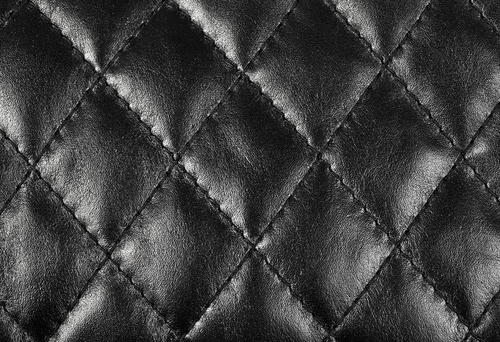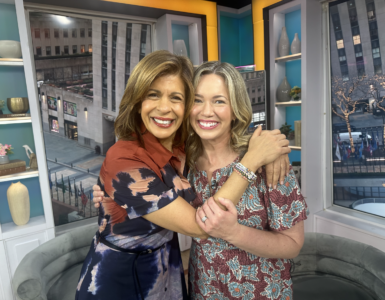Studio 5 Contributor and consumer advocate, Teresa Hunsaker shares tips to care for your leather furniture.
Many of us have made the investment in leather furniture because of the beauty and feel, the durability, and the low maintenance. But low maintenance does not mean “no” maintenance—a fact that many forget.
Before considering the cleaning though, let’s take a look at the leather itself. What is the source of the leather? Is it cattle, buffalo, pig, snake, ostrich, etc. Most furniture is going to be a cowhide or buffalo hide. The next thing you need to look at is if it is “finished” leather or “unfinished”.
The next thing to consider before actually cleaning the leather itself is to clean out and vacuum the leather sofa or chairs of around cushions, and under cracks and crevices, where crumbs, coins, and other debris can fall. All leather furniture should be dusted often, just as you would any other furniture. A soft microfiber cloth works great for dusting.
Finished Leather
Finished/coated/bi-cast leather furniture is actually pretty resistant to staining, but does need to be cleaned. The frequency would depend on the “wear and tear” on the furniture. Finished leather can be washed occasionally with a mild soap, such as a castile soap, and water. Then wipe with a slightly damp soft cloth and buff dry.
First: With a soft damp cloth add a few drops of the mild conditioning liquid soap, or wipe across a conditioning bar soap like Dove or Ivory.
Second: Rub the soap into the cloth to form a lather.
Third: Apply the lathered soap to the leather being cleaned in small areas at a time.
Fourth: Wipe lather off with a damp cloth.
Fifth: Allow to dry, or buff dry with a clean soft dry cloth.
Sixth: Apply a leather conditioner.
The way this leather is “made” is to split the heavy and thick cowhide into layers. The smooth outermost/top layer is the one that is most used for high end leather goods (nubuck), and it typically left “unfinished”. The other layers are either used for suede or are finished with a coat of polyurethane. This is when they also dye/color the leather. This thin coating gives the split leather the top grain look.
Finished leather is typically a little less breathable, a bit more stiff and less likely to stretch. It is also less likely to scratch as easily, is a bit more durable, does not take on the aged look as quickly, and does not stain as easily. It is easier to clean. Ink and liquids do not penetrate the polymer. So, dried ink is fairly easily removed and spills wipe up easily.
Unfinished Leather
Unfinished leather needs special care. The very first place to look for care instructions is with the manufacturer of the leather furniture. Many unfinished leather pieces can be cleaned in a similar fashion as the steps listed for the finished furniture. The steps to follow would be the same. Many unfinished leathers may also be termed “nubuck”. (See note below.) They are the top of the line leathers and will be higher in price.
Many manufacturers may also suggest exactly what product they recommend using, and may even have those available with the purchase of your leather furniture. Always check there first. For $30 or less you will have both a cleaner and a conditioner that will last for months and months.
Some stains—crayon and even pen or marker may also be removed with the art gum erasers. Oil stains can be blotted up quickly with a clean dry cloth and maybe a touch of baby powder to absorb the oil/grease, then dusted off. Many oil type stains will dissipate into the leather over time. Water and liquid spills need to be wiped up immediately. Rubbing alcohol can be used on some pen marks by dipping an ear swab into a little rubbing alcohol and carefully rubbing on the pen mark. Always try any cleaning or spot removal tip in an inconspicuous place on the leather first.
Some water spots can be removed with a good conditioning treatment.
Never store leather furniture in direct sunlight or close to heat sources (fireplaces or heat vents) as these two elements can dry out the leather quickly, fade it, and leave it looking bad in no time at all.
Note: There are many sources for information on cleaning leather, and some I am not personally sure about. I would suggest staying clear of any recommendations that say to use solutions that contain oils (mink), furniture polishes, shoe polishes, waxes, or varnishes as these products may cause the leather to stain more or to become “sticky” if it is finished leather. Products such as Gold Class Meguiars Leather Cleaner/Conditioner work well on most leather. Some leather may be able to handle leather wipes used for leather car seats…again, always check first before using on your furniture.
Most furniture stores also carry leather cleaning and conditioning products. Special care must be used for “nubuck” or suede. (Nubuck is the top grain cattle rawhide leather that has been sanded or buffed on the grain to make it very soft with a bit of a nap.)
If you have any questions, contact Teresa Hunsaker at the Family and Consumer Science Education Department at the Weber County USU Extension office at (801) 399-8203 or online at www.extension.usu.edu/weber















Add comment